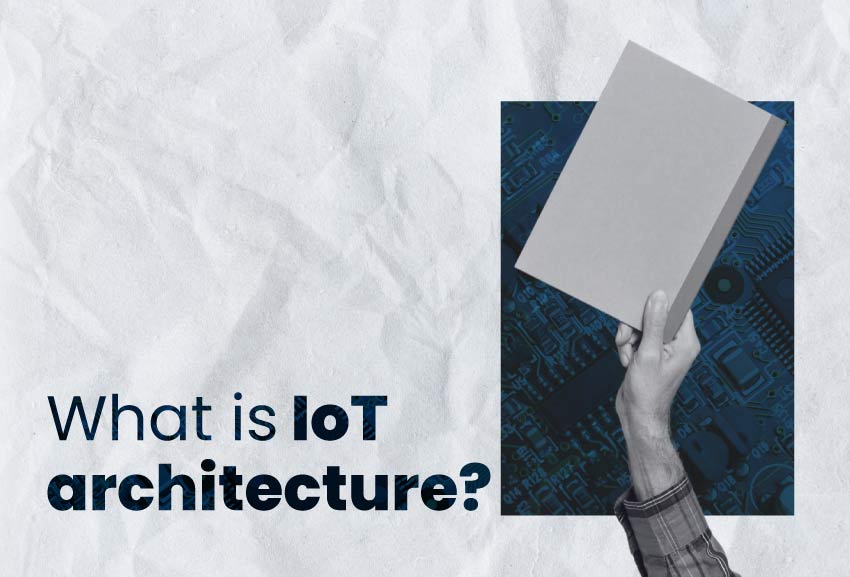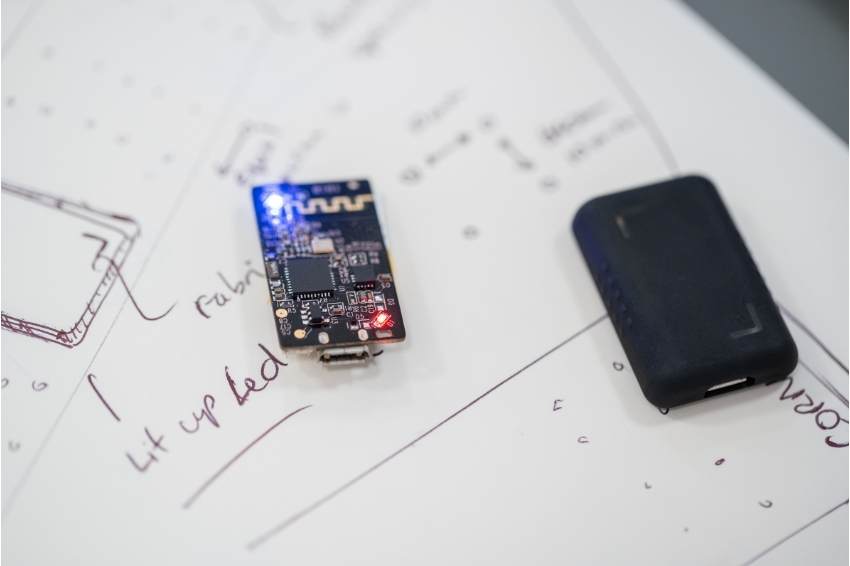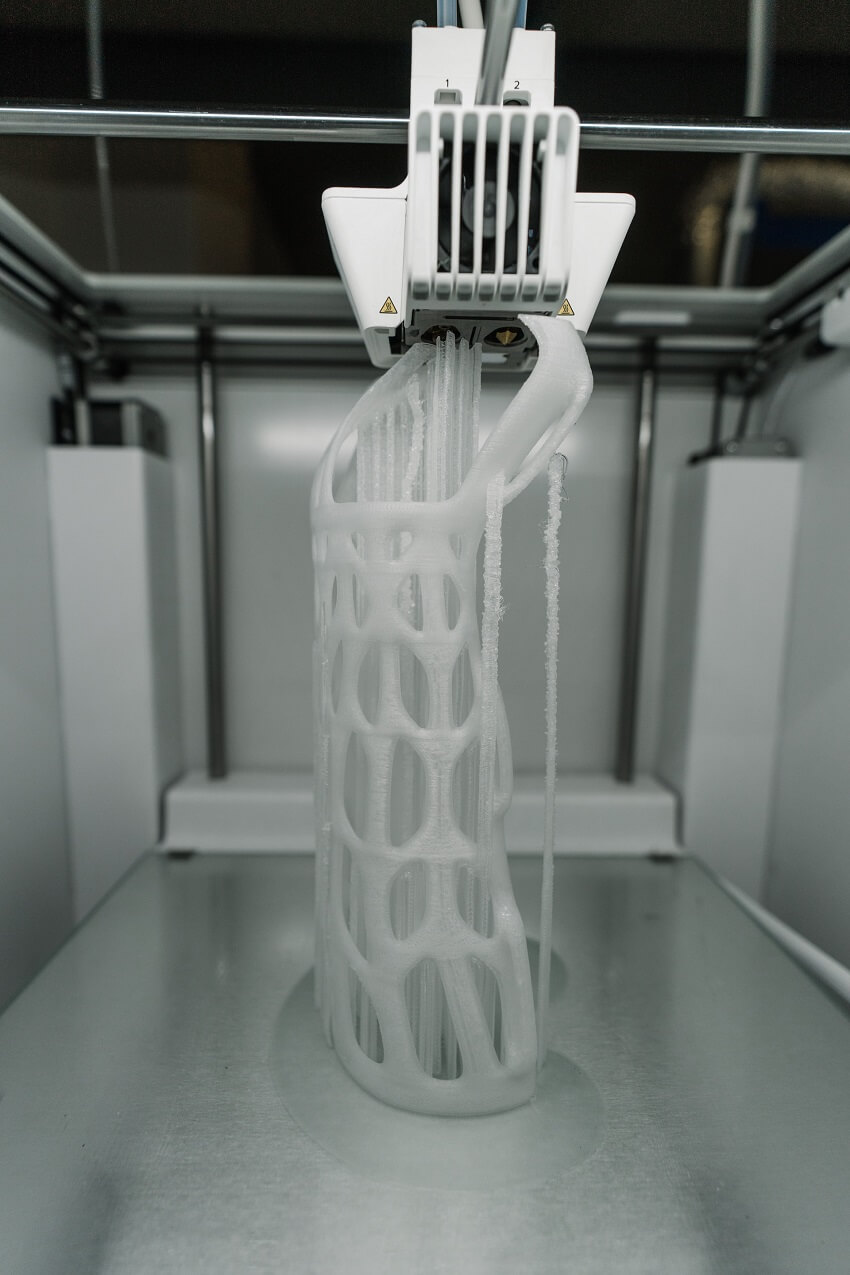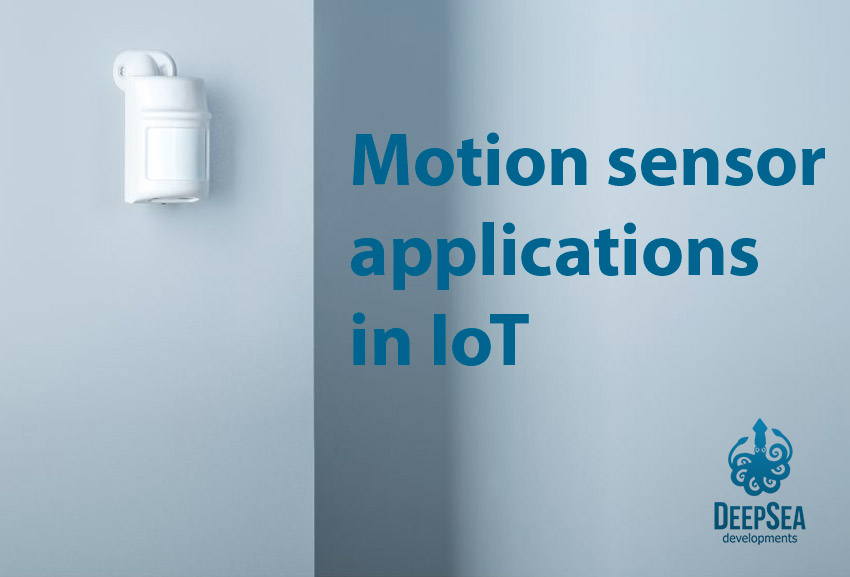Probably you already know the IoT meaning, but going a little further in the Internet of Things components, you find that there is a concept called IoT architecture. In simple terms, it is a process that consists of at least 4 stages or layers, which must work along to build the IoT architecture.
So, the architecture IoT requires connected hardware (that gathers data), a mean of communication to transmit the data to or from a cloud, a system that allows to process all data, and a data center (which can work in the cloud or in a local server) that will allow to store, handle, and analyze the information provided.
Types of layers of IoT architecture
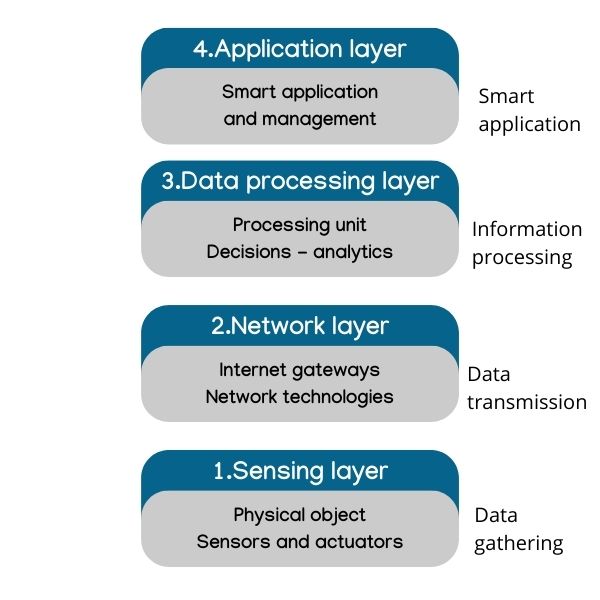
The most common layers of Internet of Things architecture are 4, however, it doesn’t mean that every IoT device has the same amount, the minimum to guarantee a stable project is four layers, but depending on the complexity, an IoT product development company can decide to add more layers to the project.
1. Sensing layer:
This layer of IoT architecture contains all the different devices and sensors that are in charge of collecting data (from surroundings or specific tasks).
2.Network layer
This layer is responsible for the data transfer between the devices and the internet, this is made usually through a gateway that is in charge of adding additional processes.
In this layer, the most important part is protocol configuration, data encryption, malware protection, and authentication.
3.Data processing layer
This IoT architecture layer is in charge of managing all data analysis, but in a previous state of processing. This layer is very useful for IoT analytics. Another important aspect to consider, the data processing layer can be located in the gateway or in the cloud.
4.Application layer
This is where the data is processed and shown to the end-user. This IoT layer is usually located in the cloud. The application displays the data, and decisions can be made according to the information provided.
For instance, a person that is using a smart home system can see in his phone the temperature levels of the house thanks to the different temperature sensors installed in each IoT device. The user really doesn’t know which part of the system is performing a specific task of the IoT architecture, but all layers work together to deliver the data in such a way that it can be read and understood.
More concepts related to the Internet of Things

